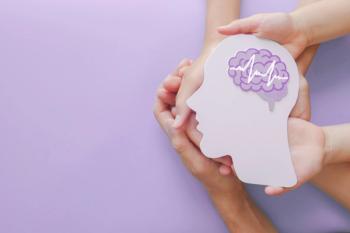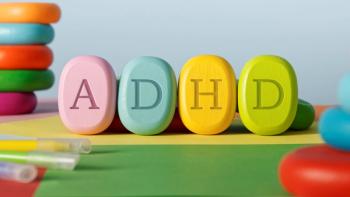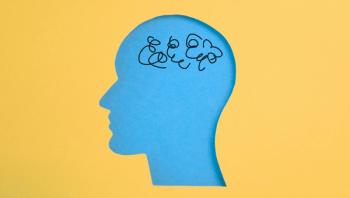
The New York Times Moves the Goalposts on ADHD
This critical analysis of recent ADHD coverage challenges misconceptions about treatment, emphasizing the need for a comprehensive approach to mental health.
AFFIRMING PSYCHIATRY
This month, The New York Times published “a remarkable cover story”1 on
The story has provoked a vigorous response from psychiatrists and other mental health advocates.2,3 Given its title—“Have We Been Thinking About A.D.H.D. All Wrong?”4—this should come as no surprise. But it is not just the content of the story that is unsettling. The timing of the story is also not particularly wonderful for patients and families who fear that their access to treatment may be coming under threat. Given the chronic nationwide shortage of stimulants, and United States Department of Health and Human Services Secretary Kennedy’s previous description of stimulants as poisons, this reaction too should come as no surprise.
There is a lot of good information in the article—including extensive quotes from a number of researchers. There is also a lot of bad or misleading information in the article, masquerading under the usual breathless tone of everything we thought we knew has been turned upside-down by hot new scientific discoveries. I will leave the details of such assertions to true ADHD experts such as Russell A. Barkley, PhD.5 Instead, I would like to highlight the ways that this high-profile article falls into the usual traps and misconceptions about psychiatry, assumptions that are held by even our most highly educated intellectuals and media members.
The author, Paul Tough, begins in the usual place for ‘enlightened’ media editorializing about psychiatry, that doctors overdiagnose and overprescribe for mental disorders, in this case for ADHD. But our author has much more to say here than the usual boilerplate sophistries: “That ever-expanding mountain of pills rests on certain assumptions: that A.D.H.D. is a medical disorder that demands a medical solution; that it is caused by inherent deficits in children’s brains; and that the medications we give them repair those deficits. Scientists who study A.D.H.D. are now challenging each one of those assumptions—and uncovering new evidence for the role of a child’s environment in the progression of his symptoms.”
ADHD is not a medical disorder? ADHD is not biological and brain-based? It is not substantially treated with medications? No, in Tough’s version these are outmoded ideas. The new model is that ADHD is simply a mismatch between a child’s temperament and environment, such that there is no need to diagnose ADHD as a category of disorder, and no need to think of medicine or any other biological treatment as first-line. The rest of the article meanders through quite a few quotations and qualifications to try and get there. Along the way, it betrays deep and common misunderstandings of the fundamentals of psychiatry, misunderstandings that distort the author’s every attempt to synthesize the information he claims to be superior to contemporary practice.
What’s Wrong With the New York Times?
What sort of misunderstandings do I mean? Here are a few of the basic errors:
Biological and environmental explanations are in conflict with each other. As Tough puts it, “A.D.H.D. is defined in the D.S.M. as a neurodevelopmental disorder, but the symptoms of A.D.H.D. can be produced by a variety of environmental causes as well.” He deplores the “medical model” throughout, comparing it unfavorably with allegedly new and more enlightened psychosocial models of the condition. This competition of biological and psychosocial explanations was perhaps a legitimate attitude in the 1970s, but scientific progress has left it far behind. All major mental disorders, from
Symptoms that come and go corresponding to circumstances cannot be the result of a biological disorder. This is a corollary of the first misunderstanding, but one that features prominently in the article. Citing recent research that ADHD symptoms wax and wane over the course of a lifetime, Tough concludes that individuals with ADHD find it to be a “condition they experience” rather than a “disorder they have.” After all, “diabetes does not go away on summer vacation.” Right? Wrong, actually. If summer vacation happens to consist of high levels of exercise, a consistently healthy diet, good sleep, and stress management, then some cases of type 2 diabetes just might recede due to different circumstances. The same is likely to be true of mild to moderate hypertension. And yet these are manifestly biological disorders. So is ADHD. The fact that ADHD symptoms emerge from an interaction of the biological brain with its environment is hardly a shocking new medical discovery, nor is it a sign that biology is inconsequential to the disorder.
If symptoms exist on a spectrum, then all diagnostic categories are false. Tough promotes a proposed model of ADHD that “locates A.D.H.D. symptoms on a continuum, rather than presenting the condition as a distinct, natural category.” And later in the article, he laments the way that ADHD as a binary, biological category stigmatizes individuals for life. ADHD as a category is illegitimate because “A.D.H.D. symptoms exist on a continuum, one on which we all find ourselves.” After all, “Is a patient with 6 symptoms really that different from one with 5?” I don’t know, is a person with systolic blood pressure of 135 really that different from one with a pressure of 125? Should one of them be diagnosed with hypertension but not the other? Obviously, the difference is not night and day, and there is a grey area on the spectrum through which we have to draw our diagnostic boundaries.7 Yet there is no doubt that some individuals have abnormally high blood pressure which is devastating to their long-term health, and there is no doubt that some individuals have abnormally functioning attention which also has devastating long-term effects. For instance, individuals with ADHD suffer significantly higher rates of
Medicines and psychosocial treatments are in competition with each other. If medicines do not work completely, then it proves we should abandon a medical and biological approach to ADHD. I kid you not, this is part of the article: “If we’re no longer confident that A.D.H.D. has a purely biological basis, does it make sense that our go-to treatment is still rooted in biology?” Or in the words of Tough’s favorite researcher, “The simple model has always been, basically, ‘A.D.H.D. plus medication equals no A.D.H.D.’ But that’s not true. Medicines are not a silver bullet.” I must admit that in 30 years of practicing psychiatry, I have never encountered this “simple model.” But let us not quibble over details; Tough’s point is that if medication is not going to totally cure ADHD, then using medication as a standard treatment is going down the wrong track. But such opinions as this betray a massive misunderstanding of a fundamental principle of all psychiatric treatment: Comprehensive biopsychosocial treatment is generally more powerful than one modality of treatment alone. Medications plus psychotherapy for mental disorders are typically more efficacious than either one alone,9 and there are a host of underfunded but scientifically substantiated social interventions for all major mental disorders, including ADHD.10
Concluding Thoughts
In the end, the opinions that Tough advocates are prime examples of the kind of binary, all-or-nothing thinking that the article elsewhere deplores: Biology is wrong, environmental explanations are right. Medications are bad, efforts to change the environment are good. This simplistic view sadly comes nowhere near the realities of life with ADHD and other mental disorders. In the real world, no single treatment is likely to be curative. On the other hand, individuals who utilize a comprehensive treatment approach typically get better—much better. In the end, biological understandings and therapies do not compete with other approaches to ADHD, they complement them.
What Tough’s avalanche of words adds up to is an approach to ADHD which unnecessarily pits complementary ideas and treatment approaches against each other. For the sake of journalistic drama, it portrays current psychiatric practices as misguided failures, and its alternatives as humane and scientifically superior. This, in turn, is overwhelmingly likely to confuse and demoralize families and persons who are pursuing current treatments for ADHD in mental health settings, a group of individuals who have enough to deal with as it is. The tragedy of this state of affairs is that so much ink and attention has been spilled with the predictable result of sowing anxiety and conflict at a time when we who deal with mental disorders are in such need of support, a time when we should be doing literally anything else besides fighting amongst ourselves. Patients, families, researchers, and clinicians are—or should be—all on the same side. We all need all the help we can get to deal with these challenges, not another newly minted ‘expert’ coming along to (yet again) tell us we are doing it wrong.
Dr Morehead is a psychiatrist and director of training for the general psychiatry residency at Tufts Medical Center in Boston. He frequently speaks as an advocate for mental health and is author of Science Over Stigma: Education and Advocacy for Mental Health, published by the American Psychiatric Association. He can be reached at
References
1. Kushner AB. Understanding A.D.H.D. The New York Times Newsletter – Morning. April 13, 2025. Accessed May 5, 2025.
2. Why The New York Times’ essay on ADHD misses the mark. The ADHD Evidence Project. April 17, 2025. Accessed May 5, 2025.
3. Aftab A. People are still stumbling from one misguided narrative about the medical model to another (ADHD Edition). April 20, 2025. Accessed May 5, 2025.
3. Tough P. Have we been thinking about A.D.H.D all wrong? The New York Times Magazine. April 13, 2025. Accessed May 5, 2025.
4. Barkley R. What’s wrong with the NYT article on ADHD. April 15, 2025. Accessed May 5, 2025.
5. Brikell I, Kuja‐Halkola R, Larsson H.
6. Morehead D. The neurodiversity movement: confusing illness with stigma? Psychiatric Times. June 6, 2023.
7. Franke B, Michelini G, Asherson P, et al.
8. Leichsenring F, Steinert C, Rabung S, Ioannidis JPA.
9. Morehead D. Science Over Stigma: Education and Advocacy for Mental Health. American Psychiatric Association Publishing; 2021.
Newsletter
Receive trusted psychiatric news, expert analysis, and clinical insights — subscribe today to support your practice and your patients.













